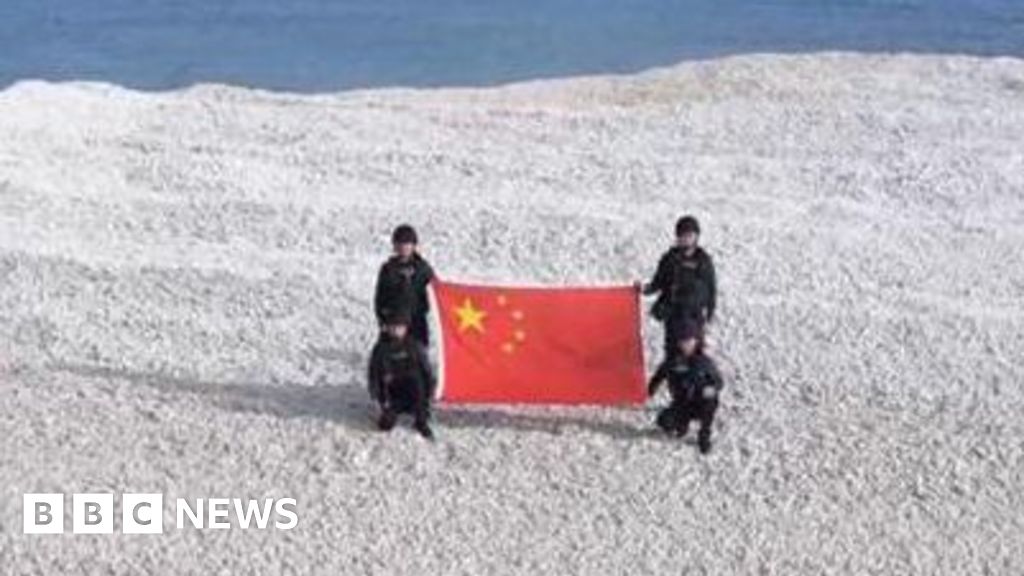Beijing's South China Sea Grab: Tiny Sandbank Seizure Sparks Tensions
The seizure of a small, previously uninhabited sandbank in the South China Sea by Chinese forces has ignited fresh tensions in the already volatile region. This seemingly minor territorial grab, however, carries significant geopolitical weight, potentially escalating existing disputes and challenging the international rules-based order. The incident underscores Beijing's increasingly assertive stance in the strategically vital waterway.
A Tiny Sandbank, Huge Implications
The sandbank, whose name remains undisclosed by Chinese authorities for strategic reasons, is insignificant in size. Yet, its location within the disputed Spratly Islands archipelago makes it a highly valuable asset. Control of this sandbank allows China to further solidify its presence in the area, enhancing its claims to vast swathes of the South China Sea and its abundant resources. The move is seen by many as a blatant disregard for international law and the rulings of the Permanent Court of Arbitration (PCA).
- Strategic Location: The sandbank's proximity to crucial shipping lanes and potential oil and gas reserves makes it a strategically important point.
- Military Implications: Establishing a military presence on the sandbank could allow China to monitor and potentially restrict the movement of vessels from other nations.
- Escalation of Tensions: The seizure has already prompted strong condemnation from neighboring countries, including Vietnam, the Philippines, and Malaysia, each with their own claims in the region.
International Condemnation and Responses
The international community has reacted swiftly to China's actions. Many countries have voiced concerns about the potential for increased militarization and the destabilization of the region. The United States, a key player in the South China Sea dynamics, has expressed its "grave concerns," emphasizing the importance of upholding international law and freedom of navigation.
- Diplomatic Protests: Several nations have lodged formal diplomatic protests with China, demanding clarification and a reversal of the seizure.
- Military Posturing: Increased naval patrols and exercises by regional powers are expected as a response to China's assertive actions.
- International Pressure: Calls for stronger international sanctions and coordinated action against China's territorial expansion are growing louder.
The South China Sea Dispute: A Long-Standing Conflict
The South China Sea dispute is a complex and long-standing issue, involving overlapping territorial claims by multiple nations. China's assertive actions in recent years, including the construction of artificial islands and the deployment of military assets, have dramatically heightened tensions. This latest sandbank seizure is simply the latest escalation in this ongoing struggle for control of vital resources and strategic maritime territory.
The PCA ruling of 2016, which rejected China's expansive claims in the South China Sea, remains largely ignored by Beijing. This defiance of international law is fueling concerns about China's intentions and its commitment to a rules-based international order.
What Next?
The future remains uncertain. The immediate aftermath of the seizure will likely involve a flurry of diplomatic activity and further military posturing. The potential for miscalculation and accidental escalation remains a significant concern. The international community must work together to de-escalate tensions and find a peaceful resolution to the South China Sea dispute, respecting international law and the rights of all involved parties. The continued disregard for established international norms by China presents a serious challenge to global stability and requires a strong and unified response.
Keywords: South China Sea, Beijing, China, Spratly Islands, territorial dispute, international law, PCA ruling, freedom of navigation, geopolitical tensions, military escalation, sandbank seizure, maritime security.

